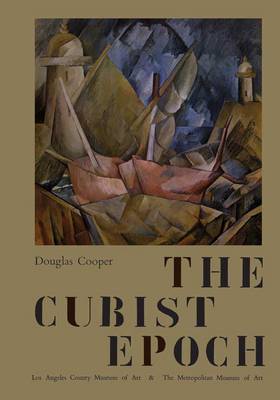In the years since Alfred Barr presented the broad panorama of Cubism and abstract art to the American public, there have been innumberable exhibitions of individual Cubist artists and of special aspects of Cubism. This exhibition and complementary publication, however, represent a necessary turn in study of Cubism: presenting it as a historic style, defining its aesthetic goal, its genesis and development, and its diffusion as far afield as Russia and the United States. The publication was written at a time when it was possible to look upon Cubism with the historic perspective of a half a century, and yet many of the artist, dealers, writers, and collectors who created and furthered the development of Cubism were still alive to act as primary documentary sources.
Cubism originated in Paris between 1906 and 1908 and was the creation of Picasso and Braque, a Spaniard and a Frenchman. Within four years, however, the pictorial methods and technical innovations of these two young painters had been seized on by other artists-in France, Germany, Holland, Italy, Czechoslovakia, Russia, America and, to a much lesser degree, in England-who either imitated them or tried to transform them by imaginative efforts into new types of artistic expression. A knowledge of Cubist methods and possibilities spread rapidly, and by this means Cubism played some part in the technical experiments and stylistic adventures which constitute virtually all the avant-garde developments in western art between 1909 and 1914. But there is more to it than that. For the influence of Cubism, though greatly diminished after 1925, certainly continued to affect the pictorial methods of most major artists until about 1940, when in turn it was supplanted by artistic conceptions of a wholly opposite order. As a result, Cubism has proved to be probably the most potent generative force in twentieth-century art and has transformed our western ideas concerning the purpose and possibilities of pictorial representation.
This publication illustrates Cubist paintings, sculpture, drawings, and prints from European and American collections. It is divided into five sections each corresponding to a period or a topic in the development of Cubism: "True Cubism," 1906-12; "The Cubist Movement in Paris," 1906-14; "The Influence of Cubism outside France;" "Late Cubism," 1914-21; and "Cubist Sculpture." The appendices also include a full bibliography, list of artists and their dates, and a checklist of the exhibition. [This book was originally published in 1971 and has gone out of print. This edition is a print-on-demand version of the original book.]
- ISBN10 0300201451
- ISBN13 9780300201451
- Publish Date 10 September 2013 (first published 25 March 1971)
- Publish Status Cancelled
- Publish Country US
- Imprint Metropolitan Museum of Art
- Format Paperback (US Trade)
- Pages 320
- Language English
